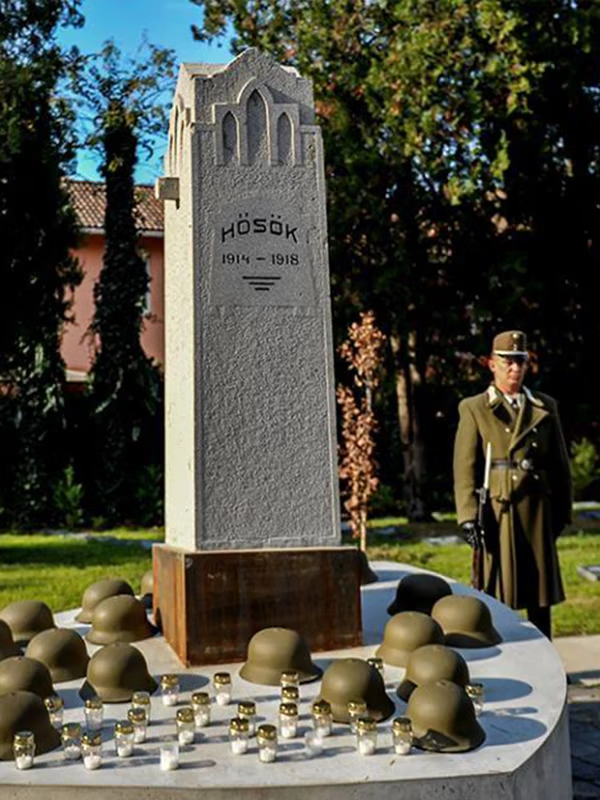History
The graveyard has been a cemetery since time immemorial. It was used as a provisional cemetery after the ‘Battle of Debrecen’ on 2nd August 1849, and since that time onwards the local public have known it as the ‘Russian Cemetery’ and the Military Cemetery. From the beginning of the Great War, the soldiers of various nationalities who died in Debrecen hospitals were first buried in the town’s cemeteries belonging to religious denominations. The Military Hospital, enlarged with the Heroes’ Cemetery, was opened on 20th January 1915 to bury the victims.
Aerial View: Balázs Lévai - Compiled by: Csaba Imre Ilyés - Created: 2016 to 2018
Burials also took place here in 1919 and sporadically even in the interwar period. During WWII, soldiers, primarily German and Hungarian, who died in the local hospitals, and later those who died in POW camps, were interned here. The memorials erected in the cemetery and the Mausoleum, built in a central location, pay tribute to the identified and unknown soldiers who died a hero’s death in the wars of 1848-1849, 1914-1918 and 1939-45 and are laid to rest here.
After several additional internments, conversions and partial reconstruction, the municipality of Debrecen renovated the cemetery in 2017-2018 as part of the Military History Institute and Museum of the Ministry of Defence programme, coordinated by the Őrváros Public Foundation, with the professional and financial support of the Debrecen Militarium in commemoration of the centenary of the Great War.
Continue readingGallery
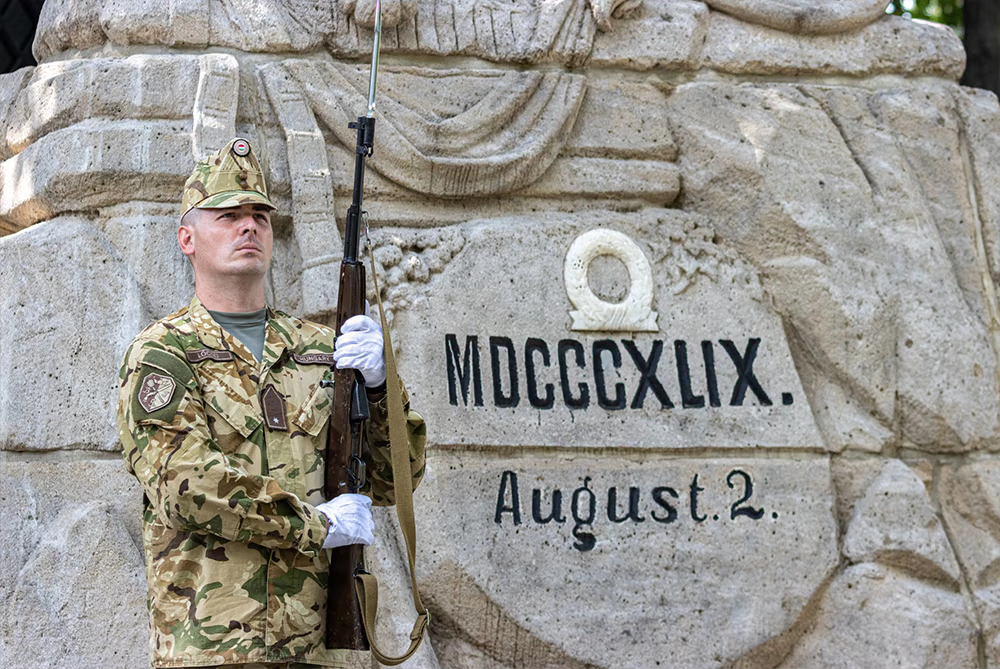
Military tribute to the wounded lion statue.
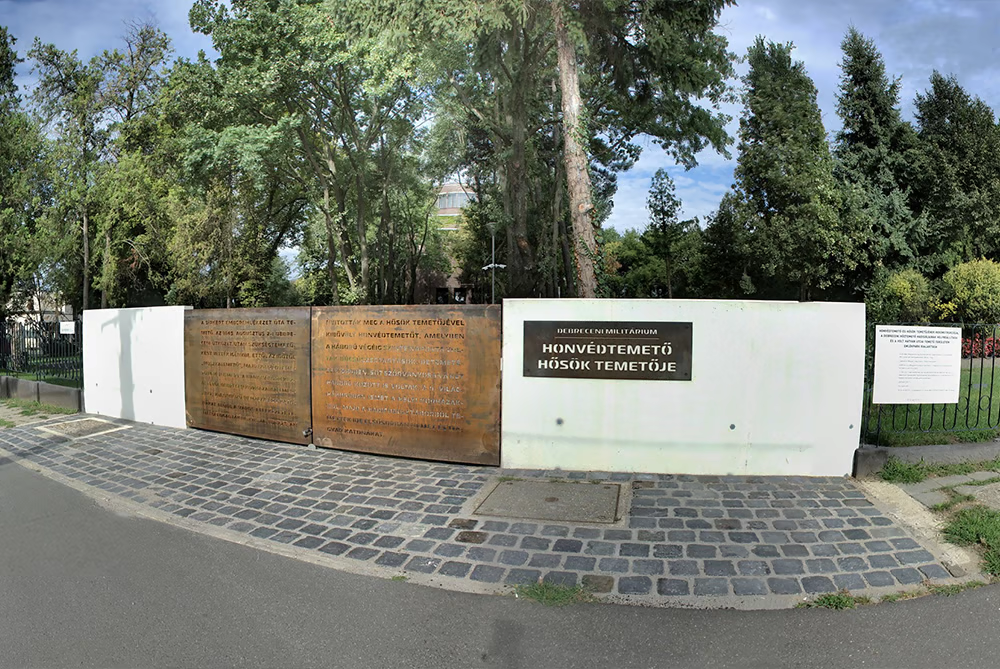
Entrance to the Military Cemetery, Heroes' Cemetery
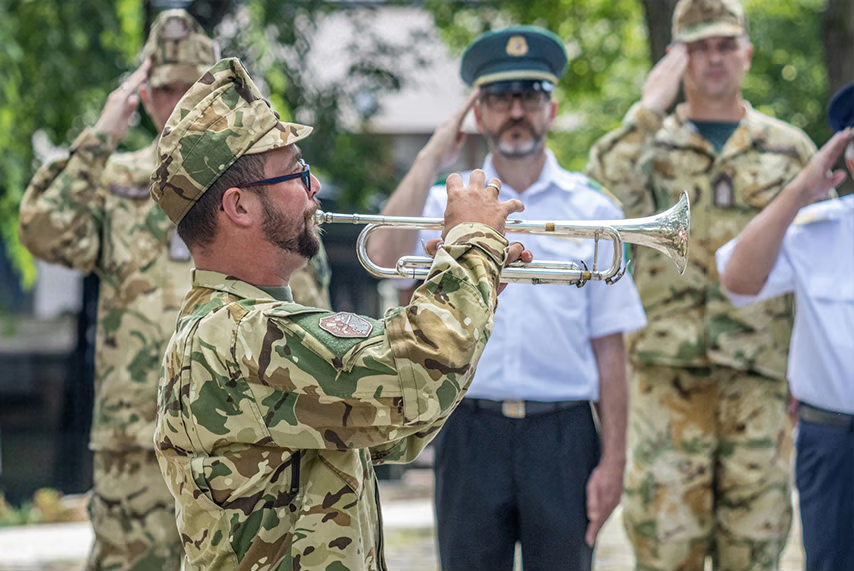
Performance at the end of the commemoration in the Military Cemetery, Heroes' Cemetery.
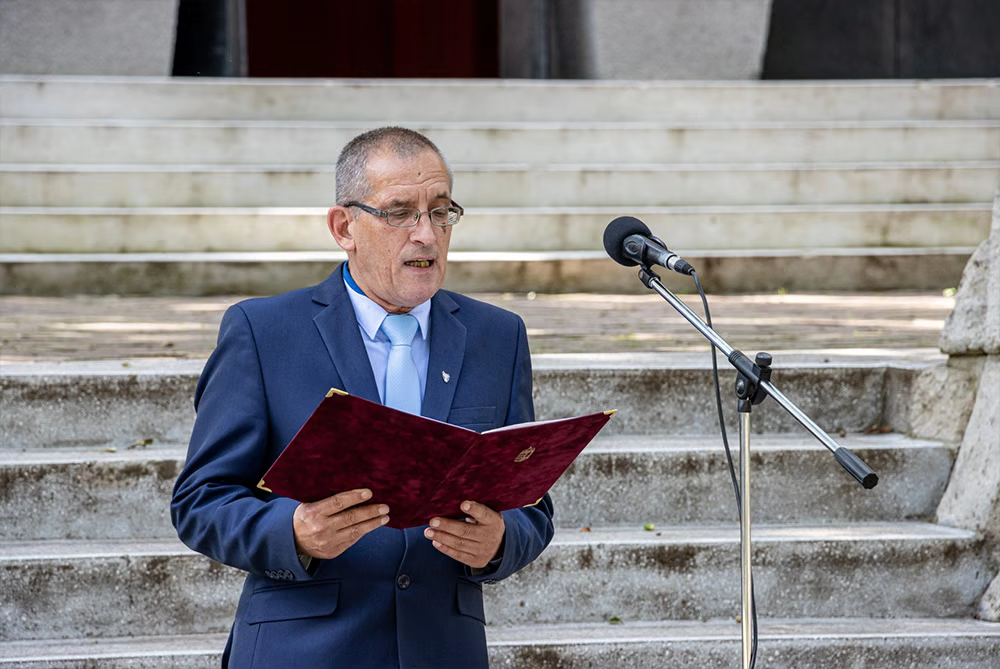
Speaker at the cemetery commemoration is Sándor Csákvári, head of the "Forgotten Memory" War Memorial Research Group.
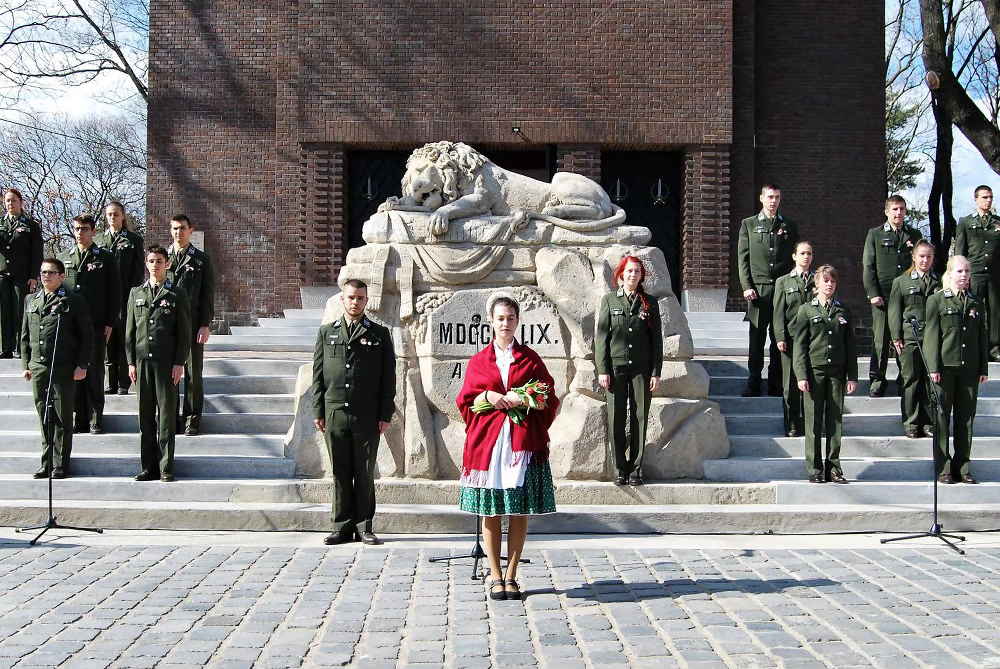
Students of the Károly Kratochvil Defence High School and College commemorate the 15th of March at the Military Cemetery, Heroes' Cemetery.
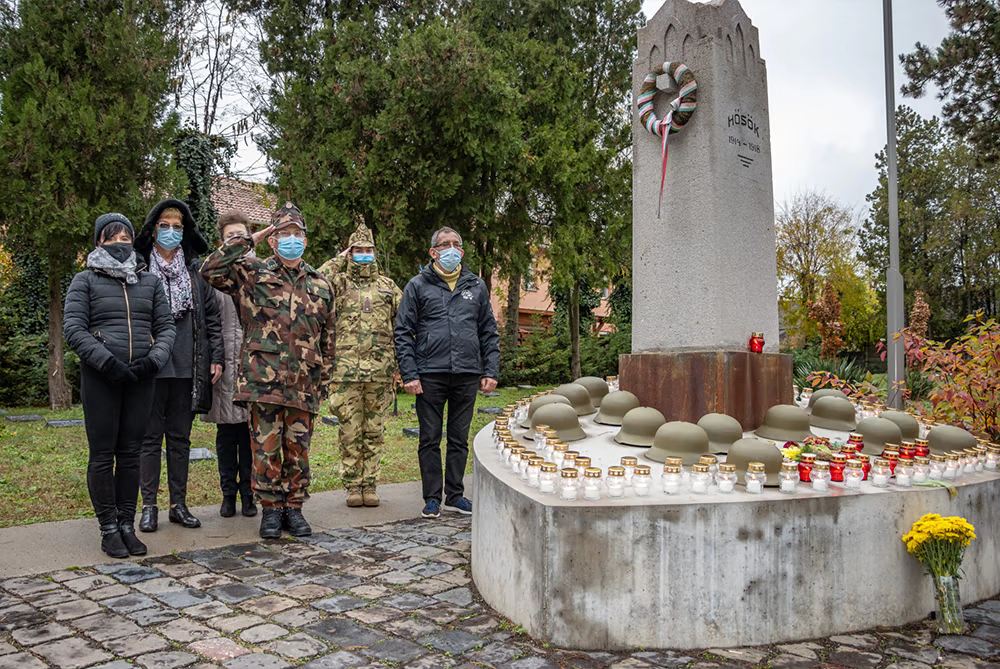
Commemoration by the Cultural Department of the István Bocskai Rifle Brigade at the Military Cemetery, Heroes Cemetery on the Day of the Dead 2021.
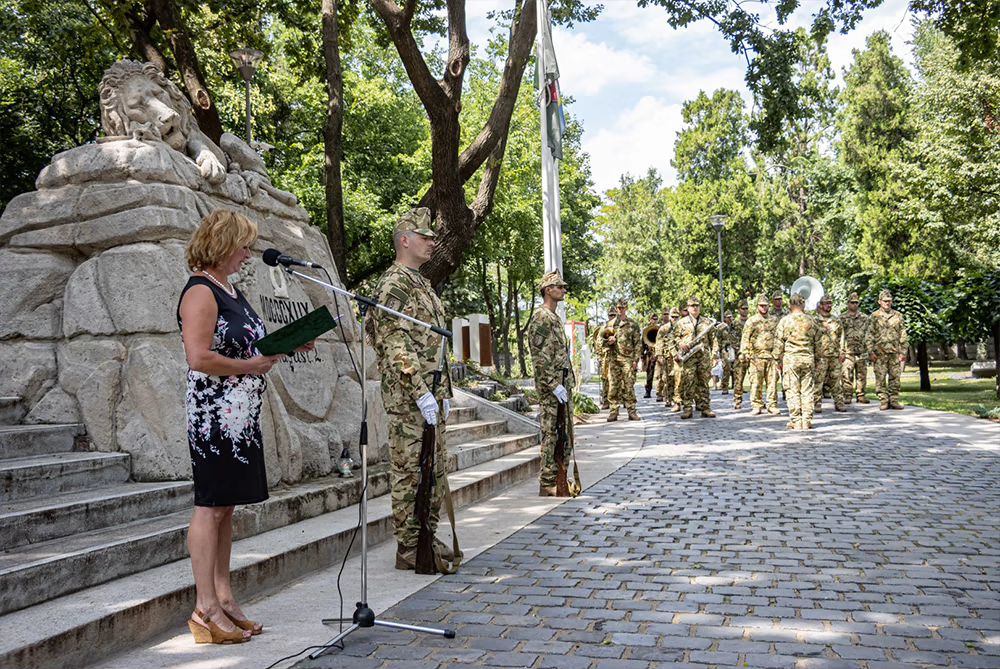
The Debrecen Garrison Band at the Heroes' Day commemoration at the cemetery.
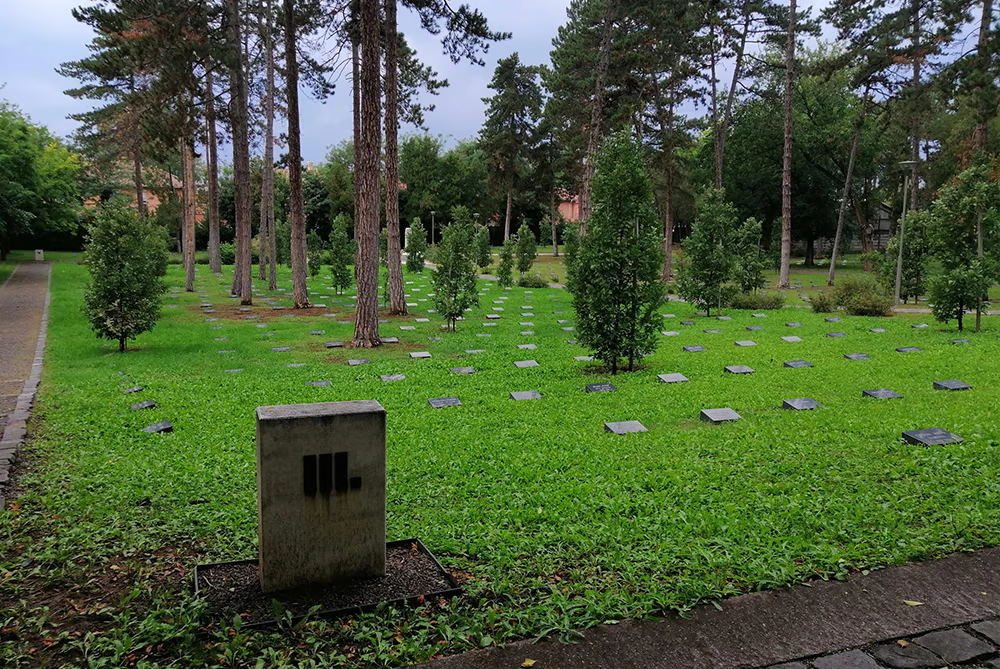
Overview of plot III of the cemetery after the 2018 renovation.
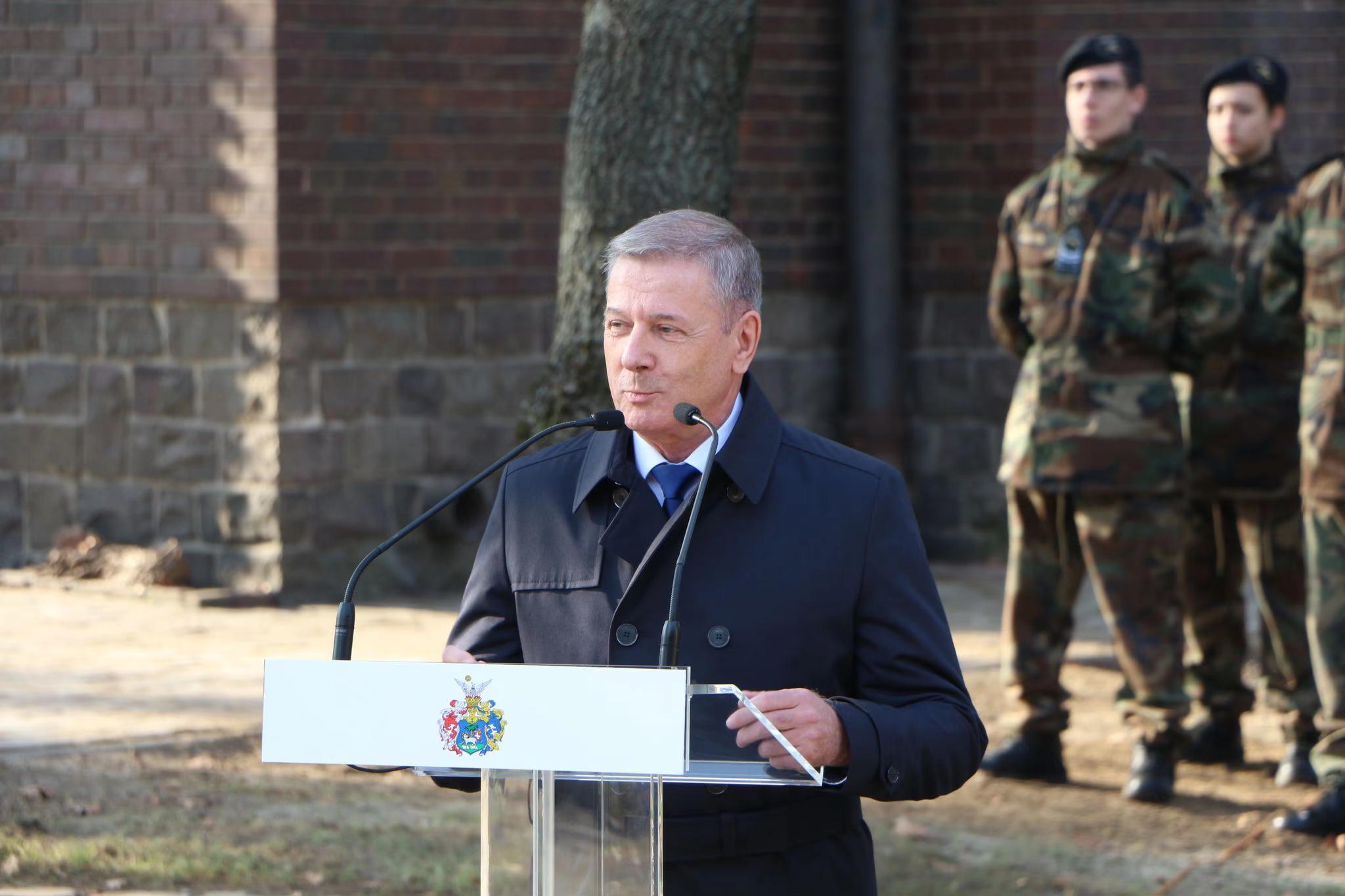
Tibor Benkő, Minister of Defence of Hungary, speaks at the opening ceremony of the Military Cemetery.
MILITARY SALUTE IN FRONT OF THE LION STATUE
COMMEMORATION, SPEAKER SÁNDOR CSÁKVÁRI
DEBRECEN GARRISON BAND AT A MEMORIAL SERVICE
ENTRANCE TO THE CEMETERY OF HEROES
KKHKK STUDENTS COMMEMORATE ON MARCH 15
PLOT III AFTER RENOVATION IN 2018
Performance at the end of the commemoration
ISTVÁN BOCSKAI RIFLE BRIGADE COMMEMORATION
TIBOR BENKŐ, MINISTER OF DEFENCE OF HUNGARY
